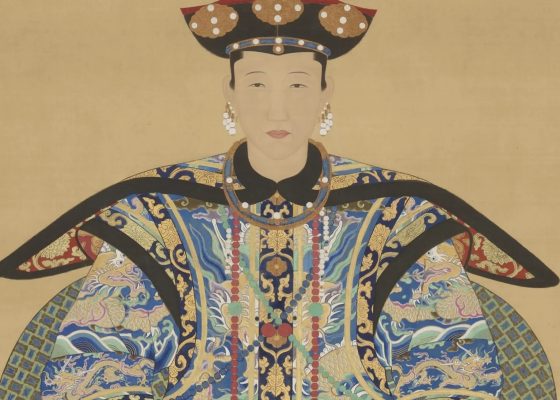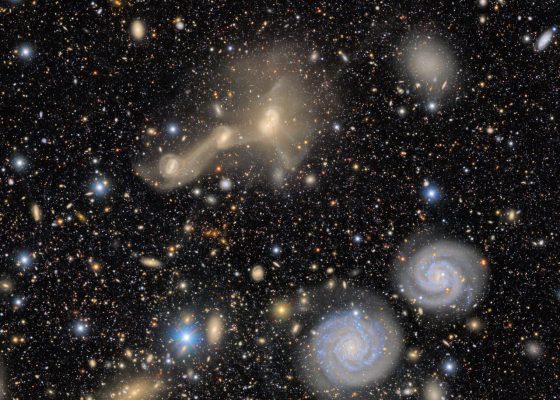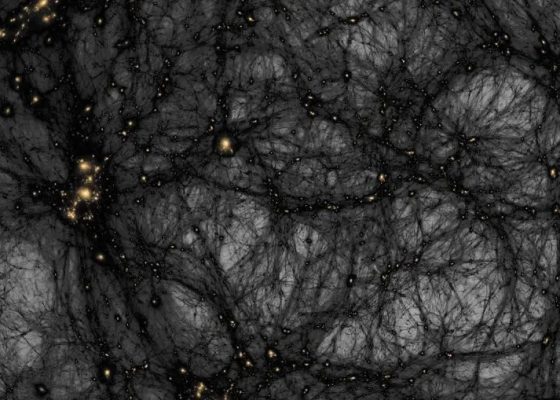By Staff Reporter

Decades ago, it took a long time for information to spread or be recognized. Nowadays, people quickly absorb large amounts of information. Positive and negative opinions help people to view the world more comprehensively and make correct judgements. Even topics as controversial as aliens, UFOs, the human soul, and divine world of deities are widely known and becoming accepted by people.
Ancient China used to be called the divine land, whose history of civilization was similar to that of theology. Chinese people take pride in the unexplainable and undefinable quintessence of Chinese culture. This part of culture has the mark of theology on it. From the winding river of multi-millennia civilization, researchers can only seize sprays of water even with decades of research and desperate efforts.
The Chinese culture of cultivation involves various accounts of cosmology and nature. Daoist research on I-Ching believes the world is the unity of opposing, yet mutually dependent, elements that can be transformed into one another and recycled. The opposites of yin and yang are hidden in the regularities of nature and the basis to trigger natural movements and changes as well as the momentum for creation, development, maturity, and death of beings. In an environment with the belief in divinities, people tend to believe in the continuously moving cycle of yin and yang, which gives rise to endless prosperity in nature.
However nowadays, when people talk about ancients worshipping heaven and earth and feeling awestruck in front of nature, they are usually considered to be superstitious, unbelievable, or even foolish. With advances in technology, modern people feel a sense of loss as they are no longer superstitious but capable of changing nature. Such a sense of loss reminds them as human history progresses to the presently contemporary stage, human civilization actually declined. To revive the past’s untainted civilization, wise people unanimously think of the forgotten heritages of Chinese culture, like the concepts of “ying and yang” or “deficiency and excess.”
The unity of opposites is the central category of dialectics, said to be related to the notion of non-duality in a deep sense.[1] It defines a situation in which the existence or identity of something, or a situation, depends on the co-existence of at least two conditions that are opposite to each other, yet dependent on each other and presupposing each other, within a field of tension.
First suggested by Heraclitus (535–475 BC), a pre-Socratic Greek philosopher, philosophers had for some time been contemplating the notion of opposites. His fellow pre-Socratic philosopher, Anaximander, said every element is an opposite or connected to an opposite. Namely, water is cold and fire is hot. Thus, the material world is composed of some indefinite, boundless apeiron from which the elements (earth, air, fire, and water) and pairs of opposites (hot/cold, wet/dry) rose. There was a continual war of opposites according to Anaximander. Anaximenes of Miletus, a student and successor of Anaximander, replaced this indefinite, boundless Arche with air, a known element with neutral properties. According to Anaximenes, there was not so much a war of opposites, as a continuum of change.
In traditional Chinese culture, martial arts movements, traditional Chinese medicine formulas, and Chinese brush painting skills are considered to be a part of the yang culture that is visible and touchable. A large proportion of the yang culture has been passed down. However, the yin culture in comparison is invisible, untouchable, forgotten or abandoned which has, in turn, upset the balance between yin and yang that is recognized as a miniature of the cosmos.
For example, in martial arts the focus was only on “techniques” instead of upgrading one’s mind nature. This way, the limits of physical capacities cannot be significantly exceeded. Besides its four methods of diagnosis, like inspection, listening and smelling examination, inquiry, and palpation, the essence of traditional Chinese medicine was taught through the interaction between master and disciples without ever being recorded in books or passed down.
Likewise, besides basic painting techniques, craftsmanship and the essence of Chinese paintings were not passed down. When people enjoy advantages from material interests, the invisible and untouchable part in life, which was referred to as ying and “deficiency” in ancient culture, is ignored and deserted. Yet it is the “ying” and “deficiency” that helps to maintain the normal regularities of society, humans, and the cosmos. Today’s human society, whether in the East or West, suffers from restlessness, impatience, and intolerance. To make a difference, psychologists, sociologists, and anthropologists turned to “morality” in ancient China for future hope.
History seems to advance forward at a faster speed. It is easier for those aged 50 or above to accept the invisible and untouchable part of our culture, since they had previously experienced it in their process of growing up.
In the past hundreds of years, the destruction of traditional human culture and faster pace of history has also sped up the loss of memories from ancient culture. The gap between different generations is widening; the world and individual behavior are being viewed from significantly differing perspectives. Things people used to believe are gradually considered to be mythology or nonexistent legends.
For instance, in the mid-1970s I saw a person pointing at a brick with his index finger in an attempt to turn it around. In no time the brick turned around. In 2003, I painted inside a temple on a small island in the Yellow Sea. As I was leaving the temple, one person over 100 nautical miles away from the island knew it and hurried back to the temple. Afterward, one of my local students told me one man in his 50s started shouting in the temple, saying that someone had touched his stuff, and he would summon back his belongings again. Later when I was still on the ship bound for the temple that man left in a hurry. Many supernatural phenomena have gradually become unbelievable illusions or mythology. For example, one could defeat his rival without touching his body; another could pierce a willow leaf with an arrow from the distance of 100 yards; a third could make his body as invulnerable as the golden shield and iron cloth. A traditional Chinese medicine doctor, on the other hand, could diagnose a patient’s ailment based on a thin red thread attached to a patient’s wrist, and Chinese painters could express artistic implication based on the forms of objects while not limited by forms alone. Compared with lifelike depiction of photography and realistic paintings, Chinese paintings bear another kind of artistic conception. However, these have gradually been categorized as mythology.
Those with proficient traditional Chinese arts and crafts are respected as masters. Such masters passed down not only their craftsmanship but also methods to cultivate one’s mind. Sometimes, even when a master imparted knowledge, he had to be responsible to his followers. While imparting professional knowledge, the master had to teach the students moral standards, behind which were strict regulations followed by all followers. Such regulations informed people of the dos and do nots in moral dilemmas. If a follower should cross the line, the master had the power and capacity to deprive the follower of his craftsmanship or even his or her life.
Some professions in modern China, like martial arts, dramas, paintings, traditional Chinese medicine, music, and cooking, are also marked by the tradition that masters impart professional knowledge to followers. On the other hand, in Western colleges, those who impart knowledge are called teachers, while those who acquire knowledge are called students. This way, teachers are responsible for propagating knowledge and students’ academic performance. If a student should violate a regulation, the teacher will leave him to society.
Author: Cao Zuimeng
Translator: Amy Hsu






Cancel anytime


Using our website
You may use the The Middle Land website subject to the Terms and Conditions set out on this page. Visit this page regularly to check the latest Terms and Conditions. Access and use of this site constitutes your acceptance of the Terms and Conditions in-force at the time of use.
Intellectual property
Names, images and logos displayed on this site that identify The Middle Land are the intellectual property of New San Cai Inc. Copying any of this material is not permitted without prior written approval from the owner of the relevant intellectual property rights.
Requests for such approval should be directed to the competition committee.
Please provide details of your intended use of the relevant material and include your contact details including name, address, telephone number, fax number and email.
Linking policy
You do not have to ask permission to link directly to pages hosted on this website. However, we do not permit our pages to be loaded directly into frames on your website. Our pages must load into the user’s entire window.
The Middle Land is not responsible for the contents or reliability of any site to which it is hyperlinked and does not necessarily endorse the views expressed within them. Linking to or from this site should not be taken as endorsement of any kind. We cannot guarantee that these links will work all the time and have no control over the availability of the linked pages.
Submissions
All information, data, text, graphics or any other materials whatsoever uploaded or transmitted by you is your sole responsibility. This means that you are entirely responsible for all content you upload, post, email or otherwise transmit to the The Middle Land website.
Virus protection
We make every effort to check and test material at all stages of production. It is always recommended to run an anti-virus program on all material downloaded from the Internet. We cannot accept any responsibility for any loss, disruption or damage to your data or computer system, which may occur while using material derived from this website.
Disclaimer
The website is provided ‘as is’, without any representation or endorsement made, and without warranty of any kind whether express or implied.
Your use of any information or materials on this website is entirely at your own risk, for which we shall not be liable. It is your responsibility to ensure any products, services or information available through this website meet your specific requirements.
We do not warrant the operation of this site will be uninterrupted or error free, that defects will be corrected, or that this site or the server that makes it available are free of viruses or represent the full functionality, accuracy and reliability of the materials. In no event will we be liable for any loss or damage including, without limitation, loss of profits, indirect or consequential loss or damage, or any loss or damages whatsoever arising from the use, or loss of data, arising out of – or in connection with – the use of this website.
Last Updated: September 11, 2024
New San Cai Inc. (hereinafter “The Middle Land,” “we,” “us,” or “our”) owns and operates www.themiddleland.com, its affiliated websites and applications (our “Sites”), and provides related products, services, newsletters, and other offerings (together with the Sites, our “Services”) to art lovers and visitors around the world.
This Privacy Policy (the “Policy”) is intended to provide you with information on how we collect, use, and share your personal data. We process personal data from visitors of our Sites, users of our Services, readers or bloggers (collectively, “you” or “your”). Personal data is any information about you. This Policy also describes your choices regarding use, access, and correction of your personal information.
If after reading this Policy you have additional questions or would like further information, please email at middleland@protonmail.com.
PERSONAL DATA WE COLLECT AND HOW WE USE IT
We collect and process personal data only for lawful reasons, such as our legitimate business interests, your consent, or to fulfill our legal or contractual obligations.
Information You Provide to Us
Most of the information Join Talents collects is provided by you voluntarily while using our Services. We do not request highly sensitive data, such as health or medical information, racial or ethnic origin, political opinions, religious or philosophical beliefs, trade union membership, etc. and we ask that you refrain from sending us any such information.
Here are the types of personal data that you voluntarily provide to us:
As a registered users or customers, you may ask us to review or retrieve emails sent to your business. We will access these emails to provide these services for you.
We use the personal data you provide to us for the following business purposes:
Information Obtained from Third-Party Sources
We collect and publish biographical and other information about users, which we use to promote the articles and our bloggers who use our sites. If you provide personal information about others, or if others give us your information, we will only use that information for the specific reason for which it was provided.
Information We Collect by Automated Means
Log Files
The site uses your IP address to help diagnose server problems, and to administer our website. We use your IP addresses to analyze trends and gather broad demographic information for aggregate use.
Every time you access our Site, some data is temporarily stored and processed in a log file, such as your IP addresses, the browser types, the operating systems, the recalled page, or the date and time of the recall. This data is only evaluated for statistical purposes, such as to help us diagnose problems with our servers, to administer our sites, or to improve our Services.
Do Not Track
Your browser or device may include “Do Not Track” functionality. Our information collection and disclosure practices, and the choices that we provide to customers, will continue to operate as described in this Privacy Policy, whether or not a “Do Not Track” signal is received.
HOW WE SHARE YOUR INFORMATION
We may share your personal data with third parties only in the ways that are described in this Privacy Policy. We do not sell, rent, or lease your personal data to third parties, and We does not transfer your personal data to third parties for their direct marketing purposes.
We may share your personal data with third parties as follows:
There may be other instances where we share your personal data with third parties based on your consent.
HOW WE STORE AND SECURE YOUR INFORMATION
We retain your information for as long as your account is active or as needed to provide you Services. If you wish to cancel your account, please contact us middleland@protonmail.com. We will retain and use your personal data as necessary to comply with legal obligations, resolve disputes, and enforce our agreements.
All you and our data are stored in the server in the United States, we do not sales or transfer your personal data to the third party. All information you provide is stored on a secure server, and we generally accepted industry standards to protect the personal data we process both during transmission and once received.
YOUR RIGHTS/OPT OUT
You may correct, update, amend, delete/remove, or deactivate your account and personal data by making the change on your Blog on www.themiddleland.com or by emailing middleland@protonmail.com. We will respond to your request within a reasonable timeframe.
You may choose to stop receiving Join Talents newsletters or marketing emails at any time by following the unsubscribe instructions included in those communications, or you can email us at middleland@protonmail.com
LINKS TO OTHER WEBSITES
The Middle Land include links to other websites whose privacy practices may differ from that of ours. If you submit personal data to any of those sites, your information is governed by their privacy statements. We encourage you to carefully read the Privacy Policy of any website you visit.
NOTE TO PARENTS OR GUARDIANS
Our Services are not intended for use by children, and we do not knowingly or intentionally solicit data from or market to children under the age of 18. We reserve the right to delete the child’s information and the child’s registration on the Sites.
PRIVACY POLICY CHANGES
We may update this Privacy Policy to reflect changes to our personal data processing practices. If any material changes are made, we will notify you on the Sites prior to the change becoming effective. You are encouraged to periodically review this Policy.
HOW TO CONTACT US
If you have any questions about our Privacy Policy, please email middleland@protonmail.com
The Michelin brothers created the guide, which included information like maps, car mechanics listings, hotels and petrol stations across France to spur demand.
The guide began to award stars to fine dining restaurants in 1926.
At first, they offered just one star, the concept was expanded in 1931 to include one, two and three stars. One star establishments represent a “very good restaurant in its category”. Two honour “excellent cooking, worth a detour” and three reward “exceptional cuisine, worth a
Thank you for your participation,
please Log in or Sign up to Vote

123Sign in to your account